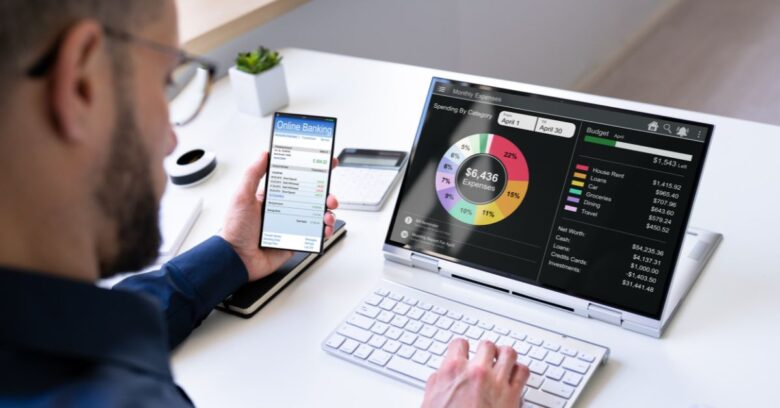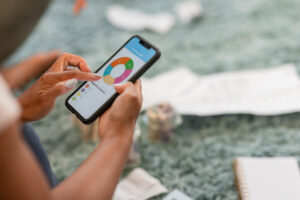The Pivotal Role of Personal Finance Apps in Modern Money Management
Managing money effectively has never been more critical, and personal finance apps are revolutionizing how individuals approach their finances. These apps act as digital financial advisors, providing insights, reminders, and tools to help users stay on track with their financial goals. From budgeting to debt management, they cater to a range of needs, making the complex world of finance accessible to everyone. With the power to centralize and automate financial tasks, personal finance apps are becoming indispensable for savvy money management in today’s fast-paced world.
Budgeting Apps
Budgeting apps are a game-changer for anyone looking to take control of their monthly spending. Tools like Mint, You Need a Budget (YNAB), and EveryDollar set themselves apart by offering unique features tailored to different preferences. Mint, for instance, consolidates all your financial accounts into one platform, providing a comprehensive view of your finances. YNAB focuses on zero-based budgeting, ensuring every dollar has a job, while EveryDollar simplifies category-based budget tracking. These apps often include goal-setting features, expense categorization, and reminders for bills, making them essential for maintaining financial discipline.
Investment Apps
Investing doesn’t have to be intimidating, thanks to the wide array of investment apps available today. Platforms like Robinhood, Acorns, and Betterment make it easier than ever to step into the world of investing. Robinhood allows users to trade stocks commission-free, simplifying the entry process for beginner investors. Acorns takes a micro-investing approach, rounding up your spare change and automatically investing it. Betterment, a robo-advisor platform, provides automated portfolio management tailored to your financial goals. These apps democratize access to financial markets and offer tools to create and grow wealth systematically.
Debt Management Apps
Debt management can feel overwhelming, but dedicated apps make this daunting task far more manageable. Apps like Debt Payoff Planner, Tally, and Undebt.it are designed to help users tackle their outstanding balances effectively. Debt Payoff Planner provides visualized paths to becoming debt-free, enabling you to simulate different payment scenarios. Tally, on the other hand, consolidates multiple credit card balances into one payment and optimizes payment scheduling. Tools like Undebt.it help users create personalized repayment plans, such as the snowball or avalanche methods. With consistent use, these apps empower users to regain control over their financial future.
Expense Tracking Apps
Understanding where your money goes is a foundational financial habit, and expense tracking apps excel at providing clarity. Apps like PocketGuard, Spendee, and Expensify automate the process of recording and categorizing expenses. PocketGuard shows how much disposable income you have after setting aside bills, savings, and goals. Spendee offers tools to monitor shared expenses, making it ideal for households or group budgets. Expensify caters to individuals and businesses by simplifying receipt tracking with features like photo scanning. These apps not only make expense tracking effortless but also uncover areas where you might overspend, offering opportunities for meaningful savings.
Essential Security Features to Look for in a Personal Finance App
Security is non-negotiable when entrusting your financial information to an app. Users should always prioritize apps that offer strong encryption, multi-factor authentication, and regular security audits. Encryption ensures your data is protected, even in the worst-case scenario of breaches. Multi-factor authentication adds an extra layer of security to verify your identity. Additionally, reputable apps disclose their security measures transparently, so users can trust their data is safe. These features are vital to safeguarding your financial privacy while reaping the convenience of personal finance apps.
How Apps Connect to Streamline Financial Tasks
One of the most powerful aspects of personal finance apps is their ability to integrate and automate tasks seamlessly. Apps like Plaid and Zapier are often the unsung heroes, enabling connections between your bank accounts, credit cards, and other financial tools. This connectivity allows for real-time updates, automated payment scheduling, and consolidated dashboards for a full financial overview. For example, integration between an expense tracker and a budgeting app ensures that your financial data flows effortlessly, reducing the time spent on manual updates. This streamlined approach enhances productivity and simplifies the overall financial planning process.
The Transformative Potential of Personal Finance Apps for Achieving Financial Goals
Personal finance apps are not just tools; they can become catalysts for transforming the way you think about money. Whether you aim to build an emergency fund, invest for the future, or finally become debt-free, these apps provide the structure and support needed to turn goals into reality. By empowering users with knowledge, automating mundane tasks, and offering actionable insights, personal finance apps make financial literacy achievable for everyone. If you’re ready to take control of your finances, the app that aligns with your needs is just a download away.



